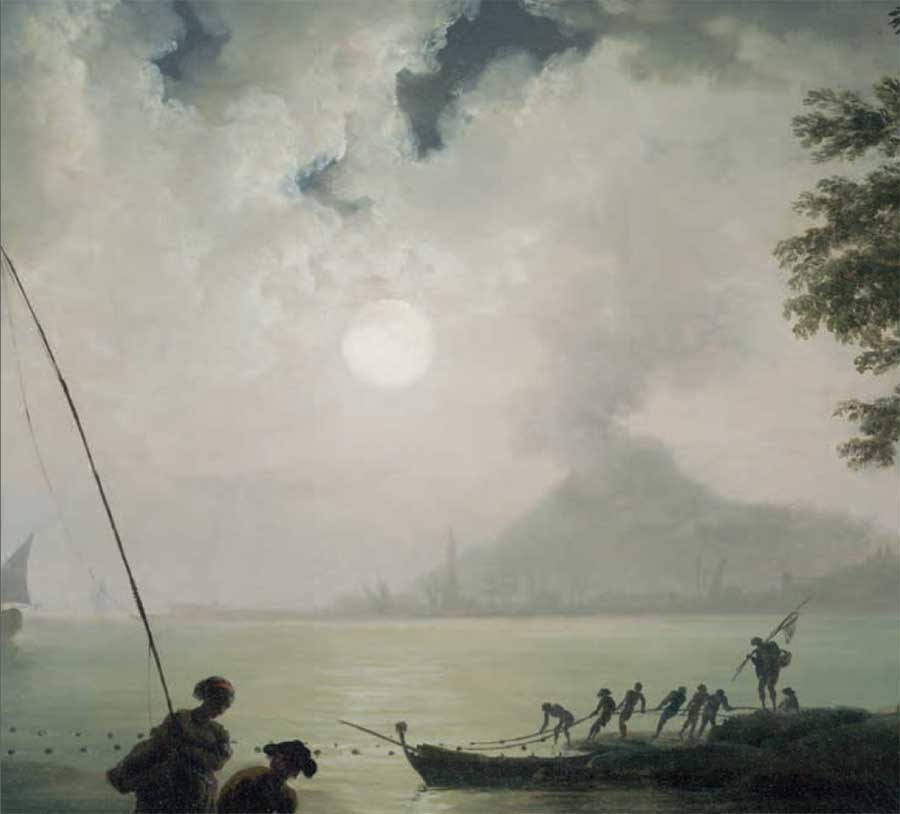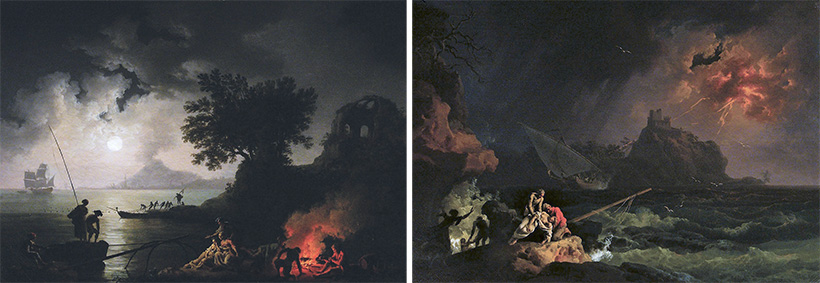On the Nature of Vesuvius
Posted on Thu., Oct. 2, 2014 by
Finding the sublime in a newly acquired pair of paintings

Vesuvius, the volcano that buried the town of Pompeii in 79 AD, was a popular subject for 18th-century artists. Here, a detail from Pierre-Jacques Volaire's View of Naples in Moonlight.
Eighteenth-century travelers on the Grand Tour of Europe sought out Naples, Italy, not only for its museums and ancient ruins, but also for that marvel of nature: Vesuvius. Geological phenomenon and source of drama, this volcano inspired many artists, including Pierre-Jacques Volaire of France.
Contrasting the calm with the horrific, Volaire manipulates light with great originality in these two paintings—View of Naples in Moonlight and Scene of a Shipwreck—created as a pair in 1770. He also plays voids off of solids, bright illumination off of darkness, and serenity off of violent action.
The pair evokes the 18th-century fascination with the concept of the sublime, which philosopher Edmund Burke described as "the strongest emotion which the mind is capable of feeling," namely that "when danger or pain press too nearly...they are simply terrible; but at certain distances...they are delightful."
Burke's theories are based on the teachings of Epicurus, whereby pleasure is the feeling of not feeling pain. Later, Lucretius takes up this concept, which he describes brilliantly in On the Nature of Things:
When the winds trouble the waters on the great sea,
it is sweet to gaze from shore upon another's tribulation:
Not because any man's troubles are a delectable joy,
but because it is pleasant to perceive from what ills you are free.
This sort of Schadenfreude is precisely why such scenes of disasters were and continue to be "sweet" to behold. It also explains why we love horror movies in the safe comfort of a movie theater or scary stories in the company of friends around a cozy campfire.

Pierre-Jacques Volaire (French, 1729–1799), View of Naples in Moonlight (left) and Scene of a Shipwreck (right) (1770), oil on canvas. The Huntington Library, Art Collections, and Botanical Gardens.
These two paintings were acquired in May 2014 by The Huntington's Art Collectors' Council. This fall they go on view in a new gallery spotlighting the Grand Tour. Other works on view in that room will be Pompeo Batoni's portrait of Grand Tourist James Stopford (ca. 1753) and Joseph Wright of Derby's Vesuvius from Portici (1774–76).
Catherine Hess is chief curator of European art at The Huntington.